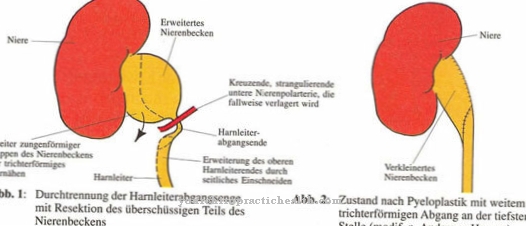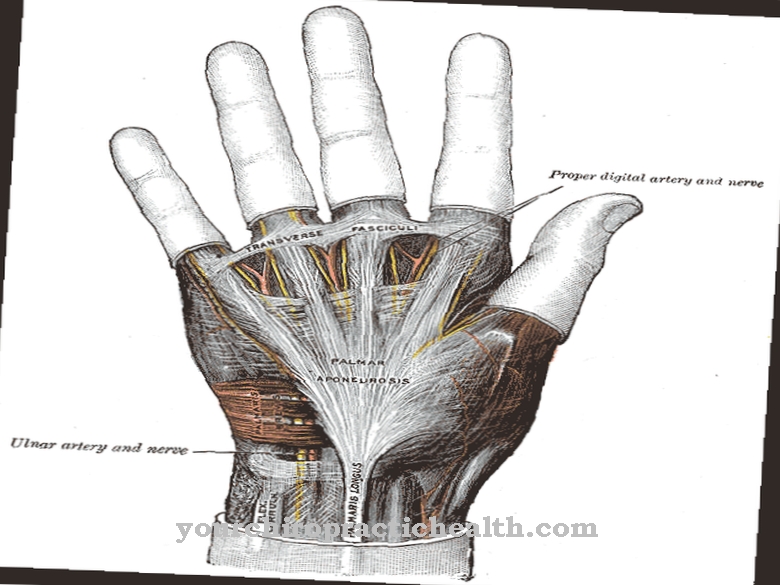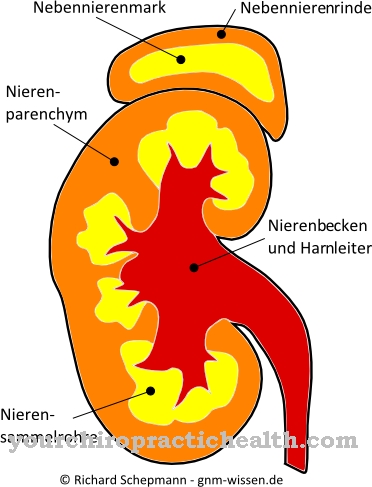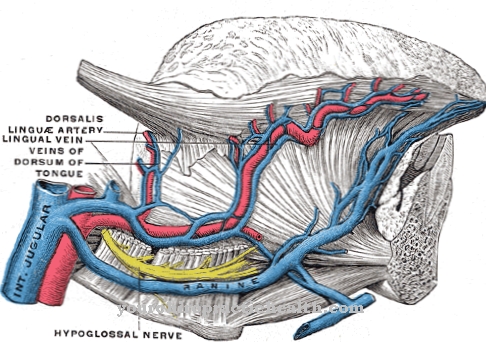Of the Atlas is the first cervical vertebra to carry the skull. It forms an articulated connection with the parietal bone. Fractures in the area of the atlas ring can destroy the medulla oblongata and cause death to occur.
What is the atlas
The cervical spine in humans and most other mammals consists of a total of seven vertebrae. Compared to the cervical spine, the lumbar and thoracic spine are significantly less mobile. The cervical spine owes its mobility primarily to the so-called atlas.
This is the first cervical vertebra that carries the entire head and a particularly rotatable vertebral joint. The Atlas takes its name from the Greek titan Atlas, who, according to legend, had to shoulder the weight of the heavens.
The atlas is thus the part of the cervical spine closest to the skull and meets with the second cervical vertebra axis in a functional unit known as the nicker. The nickler enables the head to be bent in an anterior direction and enables the person to nod. In clinical practice the abbreviation is used C1 for the atlas. The anatomy of the Atlas and Axis differs significantly from the rest of the vertebrae in the spine.
Anatomy & structure
The atlas appears as a ring-like shape. The cervical vertebra has lost its vertebral body in the course of evolution. Laterally and ventrally, the atlas bears bony thickenings, called massae laterales, which terminate in semicircular bony arches. The bone arches are called atlas arches and correspond to the anterior and posterior atlantic arcs.
The spinous process of the atlas is not pronounced, but is replaced by an elevation on the dorsal side on the posterior arc, which is also called the posterior tubercle. An anterior tubercle also carries the ventral side of the anterior arc. On the sides of the lateral masses lie transverse processes, which are considered remnants of the costal process and bear foramina transversaria. On the massae laterales there are articular surfaces that, together with the occiput, correspond to the atlanto-occipital joint. With the axis, the atlas joint surfaces form the atlantoaxial joint.
In the atlas, the foramen transversarium is traversed by the so-called arteria vertebralis, which then passes through the foramen magnum and enters the skull. The vertebral foramen is divided in two by the transverse atlantic ligament. The dens axis sits ventrally to the transverse atlantis ligament and the spinal cord is dorsal to it.
Function & tasks
The Atlas takes its name from the Greek titan Atlas. That alone already indicates the main function of the first cervical vertebra. As with the Greek titans, strength is what is required of Atlas. The atlas is the cervical vertebra in close proximity to the skull. It is supposed to stabilize the transition between the cervical spine and the head and must also support the skull with its full weight.
However, the first cervical vertebra is only relevant for stabilizing the head and the spine. The head must be flexible. From an evolutionary point of view, the human ability to rotate the head has contributed to the survival of the human species. As soon as a human individual has heard a noise and suspected a danger behind it, they have turned their head in the direction of the supposed danger. This process could take place within milliseconds thanks to the articulated connection between the spine and the cranial bone and enabled direct fixation and identification of dangers through the eyes.
The atlas is essentially involved in the articulated connection between the cervical spine and the skull bone. It therefore gives the head the mobility and ability to rotate in the cervical spine. Without this articulated connection, everyday movements such as nodding would be completely impracticable.
The Atlas joint is very different from other intervertebral joints in the spine. Basically, the human spine is most flexible in the area of the cervical spine. On the other hand, the atlas as a whole also prevents dislocations and twisting, as it is stabilized by strong ligaments.
You can find your medication here
➔ Medicines for back painDiseases
Some pathological changes in the atlas are particularly well known. These include various developmental disorders and the resulting deformation of the first cervical vertebra. In embryonic development, disorders can occur in the development of the atlas, which cause a partial fusion of the sclerotomes of the upper four somites. In this way the occipital bone can grow together completely or incompletely with the atlas. This disorder is also referred to as an atlas assimilation.
Apart from congenital malformations of the first cervical vertebra, the atlas like all other vertebrae can be affected by malpositions. The spinal cord runs directly through the atlas, so a misalignment of the vertebra can be associated with disorders of the central nervous system and often causes a rigid spine. In addition, if the atlas is incorrectly positioned, the circulation of blood and cerebrospinal fluid is often impeded, so that further failures occur.
In addition to these phenomena, the most severe symptomatology in connection with the Atlas is the broken neck. This is a fracture of the dens axis, which lies with the spinal cord in the atlas ring. When the neck is broken, the ligamentum transversum atlantis and apicis dentis (ligaments) usually tear off. The dens axis has substantial freedom of movement and often injures the medulla oblongata. This injures the body's respiratory center and death occurs in seconds. This injury occurs when people hang themselves. Less known is the Jefferson fracture, which corresponds to a special form of the atlas fracture and which completely explodes the ring of the atlas.



























